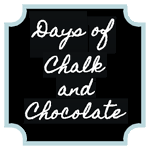Cutting Edge Stencils Visit Part 2: Tips!
As I posted about last week, I was privleged to be included in a group of NYC local bloggers who met up at Cutting Edge Stencils and had a great day learning from the creators of the company how to properly use their products. It was so educational and I'd love to pass along some of the tips and techniques they taught us.
Preparation for stenciling a wall
Gather your supplies: foam roller, clip on level, paper towel, paper plate, baby wipes, painter's tape, paint or glaze
1. Your wall should be painted in flat or eggshell paint as the base. The paint absorbs better in those sheens and will dry quickly. You can stencil in a shinier sheen if you want to though. In fact, using a high gloss in the same color as your base paint makes a subtle but beautiful effect.
2. Use a dense foam roller and don't think you will just use one from a hardware store and it will be fine. The foam roller doesn't leave any texture in the paint and you end up with a clean, flat, wallpaper-like pattern.
3. Tape off any areas that you do not want to stencil such as baseboards, ceilings, adjacent walls, kids. Ok, kidding about the kids. Don't tape your kids.
Tips for stenciling a wall
1. Start in the upper left corner. Work your way down and then begin your next column of stencil at the top.
2. Using painter's tape to secure the stencil to the wall is fine. Janna mentioned that if your stencil has large openings that spray adhesive can be used (and she likes Elmer's the best).
3. Less paint is more! This was so hard for me to get used to. Janna loaded the roller until it was full of paint and then she rolled it onto the paper towel several times to remove the top layer of paint. The roller looked almost dry! But she was able to cover the entire stencil without reloading using that bit of paint.
4. Don't press or squeeze down on the roller, use light pressure instead. If you press too hard it can begin to bleed under the stencil.
5. You don't need to wash the stencil often. In fact, she said she would be able to stencil the entire wall without washing it unless it got super gunky.
6. The stencils are designed to have places to align the stencil during the next stenciling. The Charlotte Allover we used had large circles in the corners. Using the painted circles on the bottom of the previously stenciled area, line up the stencil by the top circles to paint your next stencil.
7. Use a level! And I strongly suggest you use the Cutting Edge Stencil clip on level. It's awesome. It's like and easy to move from the top to the bottom of the stencil as needed. If you don't use a level you run the risk of make small misjudgements as you line up your stencil and you'll end up with a leaning wall of stencil.
8. If you use flat or egg shell paint don't be afraid to place the stencil or tape over your previously painted areas. It dries so quickly that the tape doesn't bother it at all!
9. When you get to the bottom, bend the stencil and roll your brush DOWN toward the baseboard. You can also use a stencil brush to get into those little cracks and crevices down there.
10. Cutting Edge sends you a portion of your stencil along with the large, full pattern. This is used to complete the top of your wall. Greg is using it in this picture. This is so you don't have to bend the large stencil to get it in the top area.
That's it! It was so easy. It was much easier than I expected, to be honest.
I am hoping to use some of the stencils they gifted to us soon. Can't wait to show you all!
Cheers!
Jenny

















No comments:
Post a Comment
Thanks for your comments!